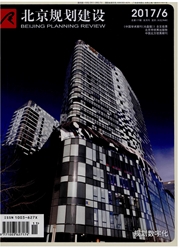

 中文摘要:
中文摘要:
北京近年来城市扩张的速度较快,城镇建设用地从1976年的495km^2增长到2006年的1324km^2,为了应对城市的空间发展,自1949年以来北京市已编制了五版市域城市总体规划,为了对总体规划进行实施评价,给出目前的规划城市空间布局实现所需的配套政策,并对远景的城市增长进行预测,自主开发了基于元胞自动机(CA)的北京城市空间发展分析模型(BUDEM),用于对北京的城市空间发展进行综合分析及预测。文中对基于CA的城市空间增长模拟的相关研究进展进行概述,基于北京城市增长模拟的基本逻辑建立了BUDEM模型,提出了基于Logistic回归和MonoLoop集成的方法获取CA的状态转换规则。在对1976-2006年各个阶段城市增长进行分析的基础上,重点将模型应用于两个方面:①给出了实现指定的城市空间形态,即2020年北京规划空间布局方案,所需要的保障政策;②作为城市空间政策模拟的平台,对2049年北京的城市空间形态进行了不同约束条件下的情景分析。
 英文摘要:
英文摘要:
Now it is urgent to identify the future urban form for Beijing, which faces challenges of rapid growth in urban development. In this article, we develop Beijing Urban Spatial Development Model (BUDEM in short) to support urban planning and corresponding policies evaluation. BUDEM is the spatial-temporal dynamic model for simulating urban growth in Beijing metropolitan area, based on cellular automata ( CA ) approach. In the paper, concept model of BUDEM is introduced, which is established basing on prevalent urban growth theories. The method integrating Logistic regression and MonoLoop is used to retrieve weights in the transition rule by MCE. After model sensibility analysis, we apply BUDEM into three aspects of urban planning practices: 1. Identifying urban growth mechanism in various historical phases since 1986; 2. Identifying urban growth policies needed for the implementation of desired urban form (BEI-JING2020 ), namely planned urban form; 3. Simulating urban growth scenarios of 2049 (BEIJING2049) basing on the urban form and parameter set of BEIJING2020.
 同期刊论文项目
同期刊论文项目
 同项目期刊论文
同项目期刊论文
 期刊信息
期刊信息
